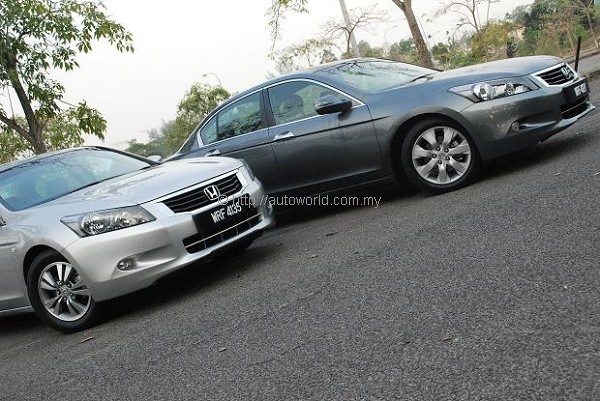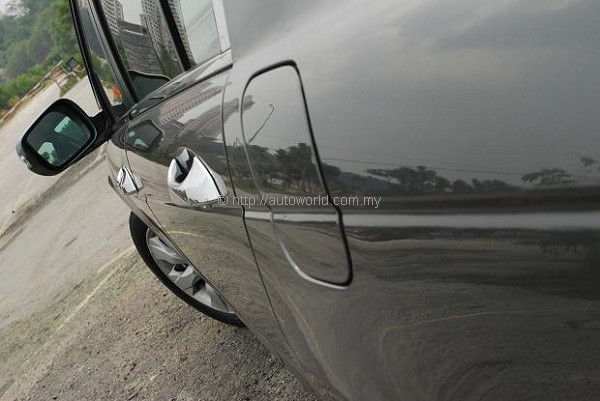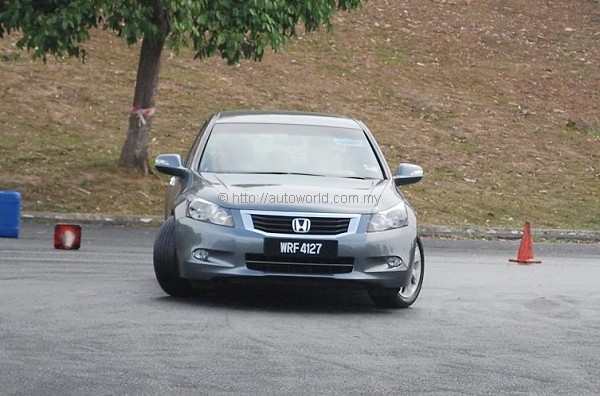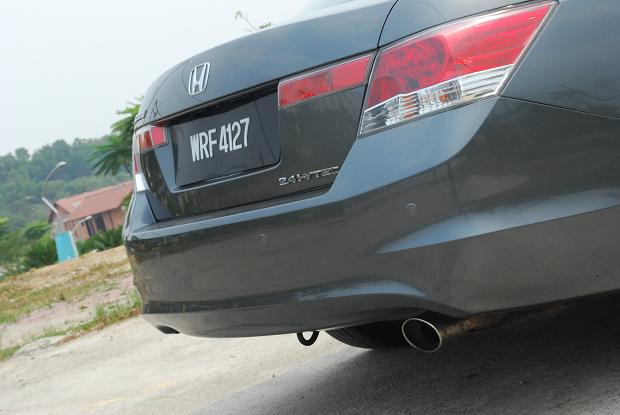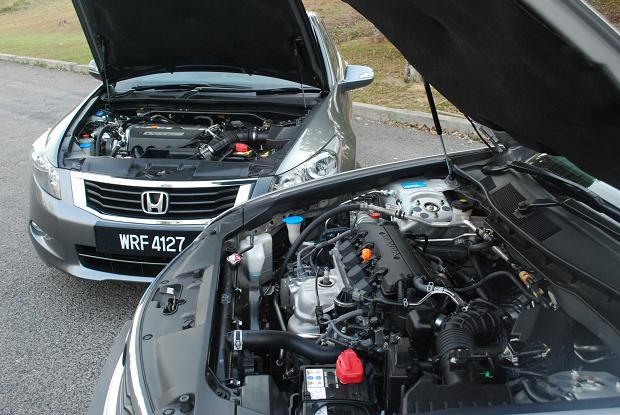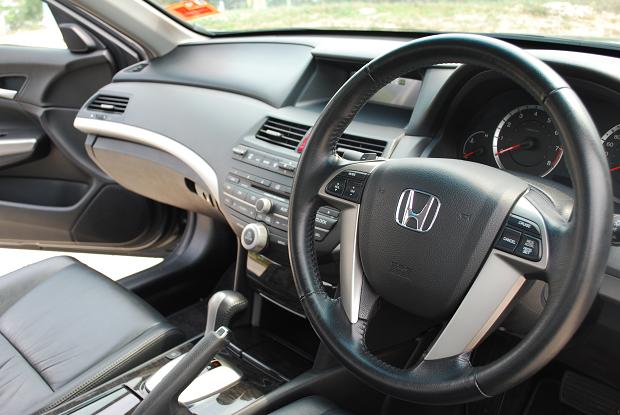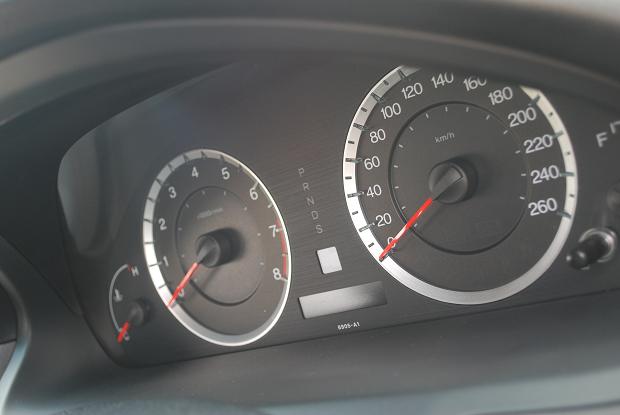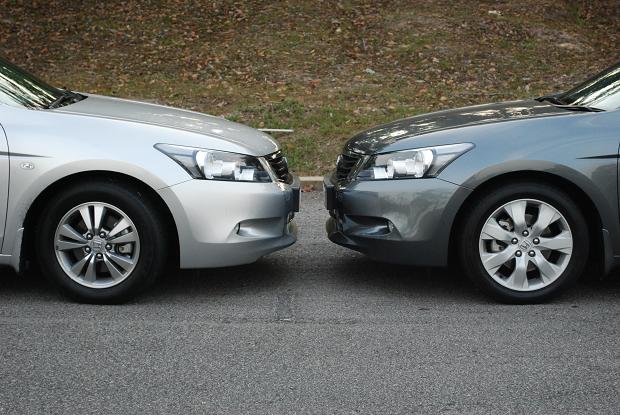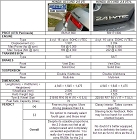Sibling Rivalry: Accord 2.0 VTi vs 2.4 VTi-L
Is the base Accord 2.0 VTi all you really need? Or should you really splash the extra RM30k and go for the 2.4 VTi-L? KON tries to find out…
—
I was born the elder of two brothers, and like all good siblings, my brother and I fought all the way from our tender childhood right to our teenage years. We fought over ice-cream, we fought over space on the table, we fought over the front seat of the car, and pretty much anything you can think of. Though we have long since outgrown all that, the lessons we learned from those fights still linger in my memory.
Being three years elder, I was also naturally the bigger-sized sibling until my brother reached his puberty. However, my advantage in size did not always translate into winning of fights. My brother usually hits back with a great deal more aggression to even the odds. It has then been my observation that in a family of siblings, the younger ones tend to be more vocal, outspoken, and active, as if as to make up for the lack in size and stature of their elder brothers and sisters. (Note: Not always true)
This theory applies for cars too. For certain models, the smaller engine variants actually turn out to be better drives. More horsepower don’t always equal more fun. The real driving pleasure is sometimes found in the lower end models where you have to work the engine harder, and also where less of the driving sensations are hampered by electronics.
Recently, when Honda lent us five of their cars for the Autoworld Safety & Defensive Driving Course, we had the opportunity to put this hypothesis to test on the Accord. The initial objective of this test was to see if the base 2.0 VTi good enough to meet your needs, or if the 2.4 VTi-L should really be the one to go for. However, the recent introduction of the new Accord 2.0 VTi-L has given this test a whole new significance; this now doubles as a pre-test drive for the new variant.
When this latest Accord was unveiled last year, Honda stunned us by presenting the biggest and boldest-looking car to ever wear the ‘Accord’ nameplate. The lines of the car meet at sharp angles to give it a look reeking of sleekness and aggression. At the same time, the pronounced character line on the car’s waist visually stretches its length, further enhancing its road presence. From photos taken during the Defensive Driving Course, I can tell you that the Accord looks best sideways, and I mean going sideways.
After the Defensive Driving Course concluded, I went home in the Accord 2.4, and I was to meet Jaime the following day to swap for the 2.0. Our test car had an all-black leather trimmed interior, and came complete with auto cruise, power adjusted seats, and paddle shifters.
The dashboard combines a good deal of style and practicality. Its sweeping contours are pleasing to the eye, and there are plenty of storage compartments all-round, all with lids that open and close solidly. The glovebox is a notable exception to this rule as it closes noticeably out of alignment.
Otherwise, the ergonomics and build quality of the Accord is almost impeccable. Steering wheel adjusts for reach and rake, while the buttons on the dashboard controlling the dual-zone air-con and audio unit possess very good tactile feel when operated. The problem lies in figuring how to operate them. Although it proved easy to operate upon familiarization, the sheer amount of buttons on the dash make first time users feel as if as they are trying to access a super computer. For the less tech-savvy, the cluttered dashboard can seem intimidating.
The other complaint of an otherwise faultless interior is the folding seat back which, for one, does not even have split folding, and then requires you to pull a lever from the boot to unfasten the seat back, which you then have pull forwards from inside the passenger compartment. Why can’t the mechanism be operated from inside the passenger compartment? Or why can’t, upon pulling the release lever, the seat back just tumble forward on its own?
As I drove off in the 2.4, I was immediately impressed at how the car’s massive bulk seemed to shrink around me. It gathered pace with serene ease, and changed direction with such agility that you simply would not expect from a front-wheel driven sedan of such massive proportions. Approaching long sweeping bends, just ease off a little upon entry, then gun the throttle on the apex, you will be astonished at how it just grips and goes. For sharper corners, calling the paddle shifts into action enables you to summon more traction from the lower gears to keep you in line.
A slight chink in the impeccable armour of the Accord’s drive is the steering wheel, which although accurate, has too much feedback filtered out. You don’t so much feel what the front wheels are doing, you only see where they’re going by looking ahead.
That aside, there is little to fault about the Accord’s handling, I absolutely loved it. I have little doubt that the chassis engineers at Honda placed sharp & precise handling at the top of the list, ahead of even comfort. This is because, on the 2.4, a substantial amount of the road undulations were transmitted to the cabin, indicating a stiff suspension setup. I personally have no issues with this, but the comfort-oriented crowd might not be too pleased.
After having the 2.4 for a night, I wasn’t really keen to swap it for the 2.0 the following day. I have good reasons for this. First, have you looked at the rims of the thing? The massive visual bulk do not go at all well with the tiny 16″ alloys. Think 523i. Second, during the previous morning, when my colleague Chris was driving this car, I saw that he was really struggling to keep up with my 1.5-litre Honda City. That, ladies and gentlemen, was bad news. I therefore had no doubts that the 2.0 is a good-for-nothing underpowered behemoth.
Not only that, it also happens to come with a good few toys less than the 2.4. Leather trim is now replaced with fabric, and the interior now features a two-tone black & beige colour scheme. The steering wheel is the same as the 2.4, but where there was the cruise control buttons on the 2.4, the 2.0 now has blanks button in place. The most unbelievable omission, in my opinion, is the variable speed function for the intermittent wipers – a feature that even Proton owners take for granted. Also gone, and this is the biggest miss, are the paddle shifts, as the standard selector lever does not include the option of manually selecting 4th gear, an annoying trademark of Honda 5-speed autos.
As I took the keys of the 2.0 the next day, I looked at the car with dread. You see, the point of the exercise was not to find out whether the 2.0 or the 2.4 is a better car, but rather how big is the difference between the two. I can live without most of the toys, but what I dread most would be how the thing feels when nail the throttle to the footwell. I could already anticipate it, the transmission kicks down, the revs climb up, but the speedo takes an eternity to build up speed. God help me…
There is simply no better of putting this, but, I was wrong. Dead wrong. The Accord 2.0 completely defied my expectations. It makes up for its deficit in cubes and horses against the 2.4 with a far greater eagerness and willingness to rev. It might not actually be faster, but it sure as hell feels faster. Where the 2.4 makes smooth and steady acceleration, the 2.0’s smaller motor buzzes with excitement every time you stab on the throttle.
When you open the hood of the 2.0 and 2.4, you notice that not only the 2.4 has a nice shining engine cover, it also has a strut bar. This shows when you drive too. When you corner it hard, the 2.0 has noticeably more body roll than the 2.4. However, the steering feel of the 2.0 is better, as you actually get more feedback. There is no more need to guess what the front wheels are doing, you now feel what’s going on.
It is an interesting contrast between the two. The 2.4 is the more civilized of the two. It makes its progress in a quiet and graceful manner. The 2.0 is different. It has less electronics, which means a less filtered and ultimately more satisfying driving experience. Ask yourself this, when faced with two little kids, which one are you more likely to fall in love with? The smarter one, or the playful one?
I liked the 2.4 a lot, but the 2.0 was nothing short of a revelation. That it makes do with less toys than the 2.4 ultimately does not matter. The only thing from the 2.4 that I really missed when I went to the 2.0 was the pair of paddle shifters, and those aren’t worth RM30k. Between this two, the winner, and this is shocking, is the 2.0 VTi.
However, the arrival of the 2.0 VTi-L changes things completely. At an RM10k premium over the VTi, and packing most of the goodies found in the 2.4, that may well be THE Accord to buy.
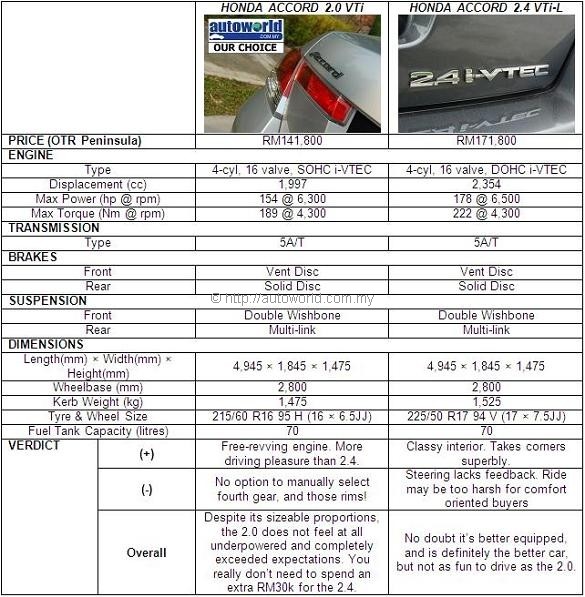 |




